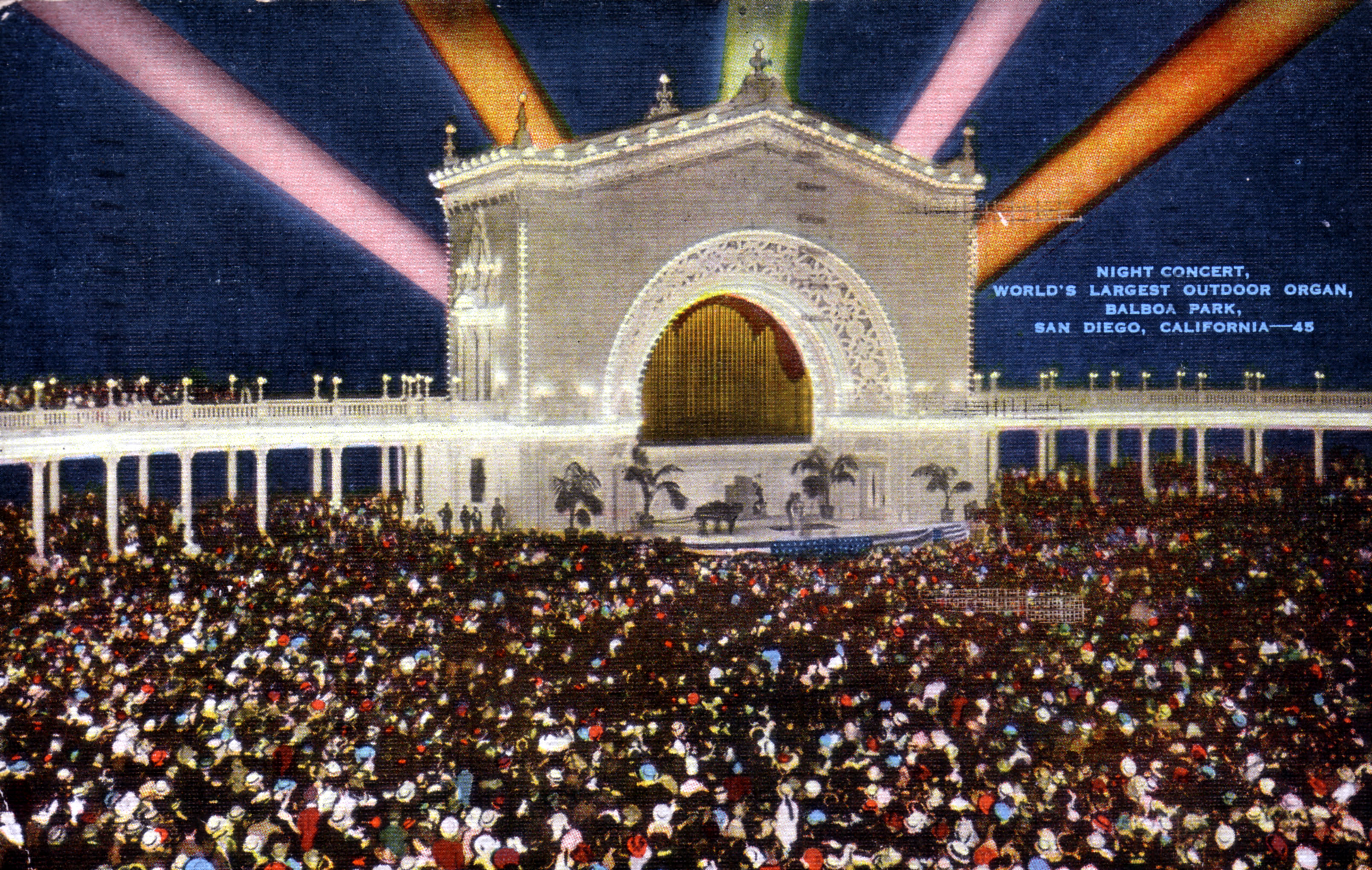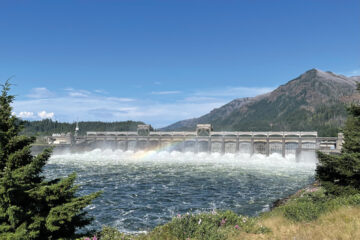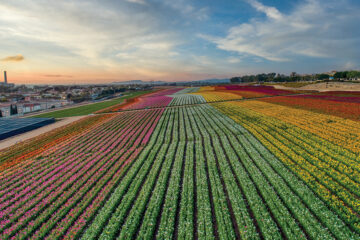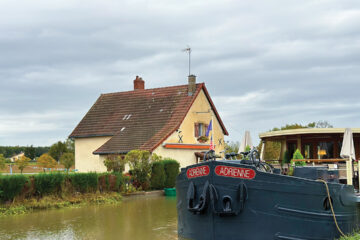Balboa Park: Spreckels Outdoor Organ Pavilion

On many weekends or summer nights, crowds fill the plaza of Balboa Park’s Organ Pavilion to hear music. Two generous men may be thanked for that. Brothers Adolph B. and John D. Spreckels envisioned and funded the remarkable pipe organ and its imposing pavilion. The impetus, of course, was the 1915 Panama California Exposition, and this graceful space is a legacy of that great fair.

It was New Year’s Eve, 1914, that the heralded “largest pipe organ in the world” gave its inaugural performance. Imagine the excitement. Given the state of the world at the time, good news was definitely welcome, and the dedication ceremony and concert were marked by great jubilation. Europe was facing the largest war known to that point in history, so having something to celebrate truly made this awe-inspiring musical instrument a wonder of the world.
For the citizens of San Diego, the best part was that it was here in their hometown — another amazing accomplishment, commensurate with Cabrillo Bridge and the California Building and tower. The Spreckels brothers were delighted with their contribution to the city, and it continues to be known as the Spreckels Organ in their honor.

The 3,400-pipe organ was expensive for the time, costing $33,500, while the pavilion cost considerably more. Harrison Albright was the architect of the structure, which has been described as Plateresque in detail, but is probably more Greek than Spanish in style. The organ itself was built by the Austin Organ Company, and over the decades has seen its number of pipes increase.

Dr. Humphrey J. Stewart was the organist that first evening in 1914, and the program included the Processional March from his orchestral suite “Montezuma.” Stewart also played Hayden’s oratorio “The Creation” and Gounod’s oratorio “The Redemption.” Devoted stewards have protected and preserved the great Spreckels Organ for close to 100 years now. Seating and standing areas have been renovated, wiring replaced, and colonnades restored — all due to the unswerving devotion of supporters who have even thwarted several attempts by politicians over the years to remove the organ and pavilion altogether. DARLENE G. DAVIES
Imagery courtesy of Darlene G. Davies and Paul Marshall
Directory
The Great Panama-California Exposition
1915 Panama California Exposition
Gardens of the Panama-California Exposition
Legacy of the Foreign Arts Building
Panama-California Sculpture Court
Commerce and Industries Building






Comments